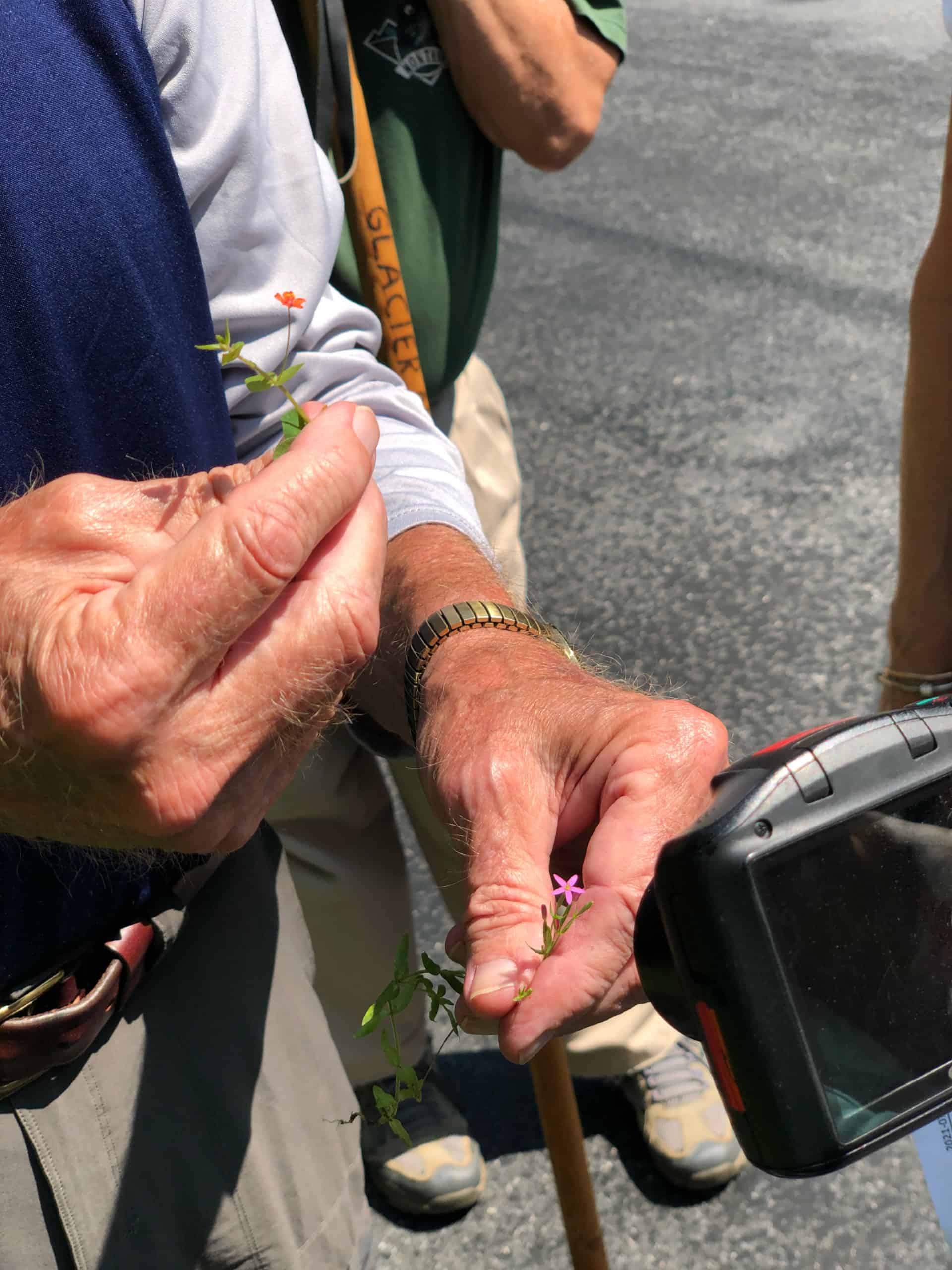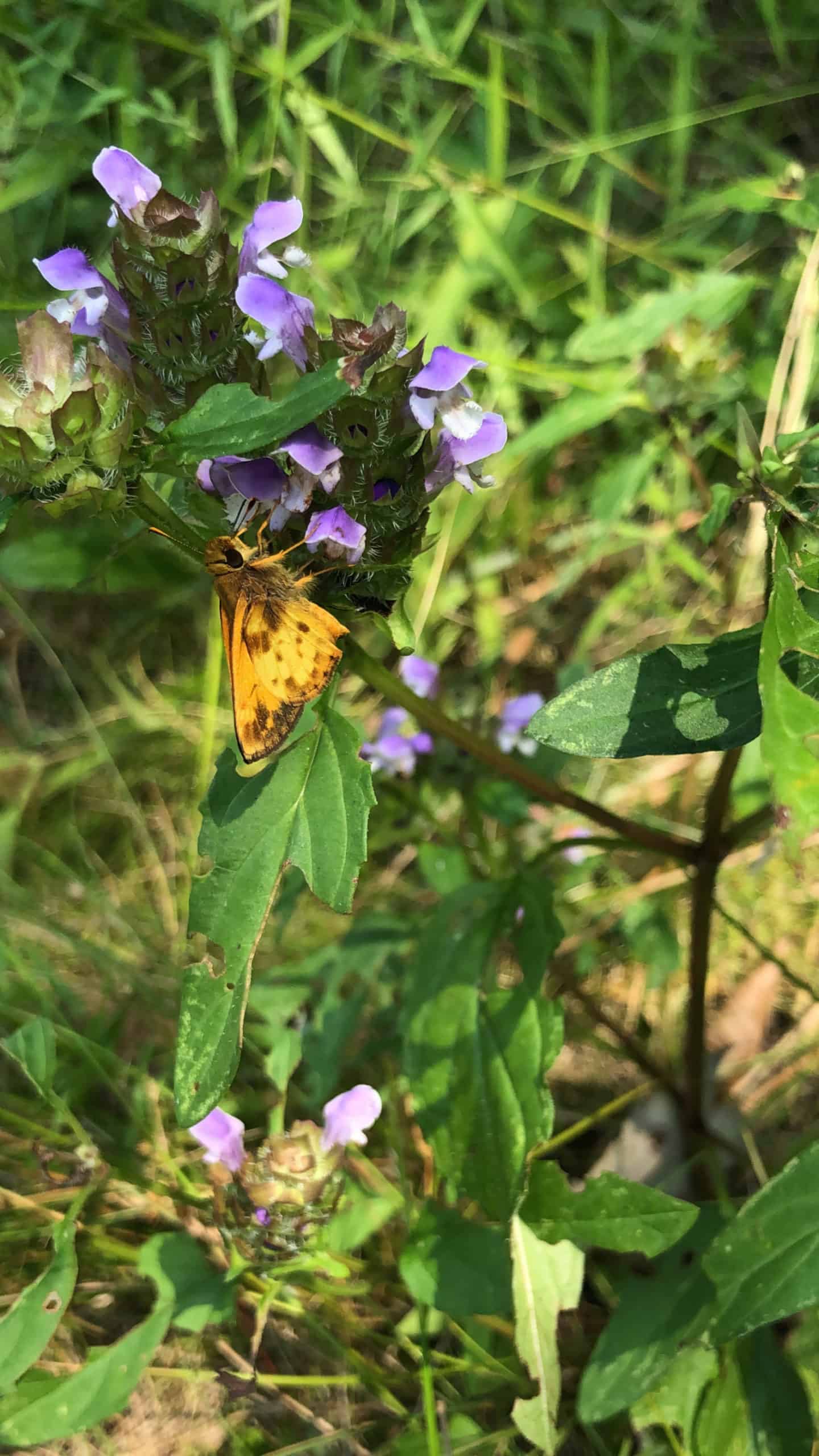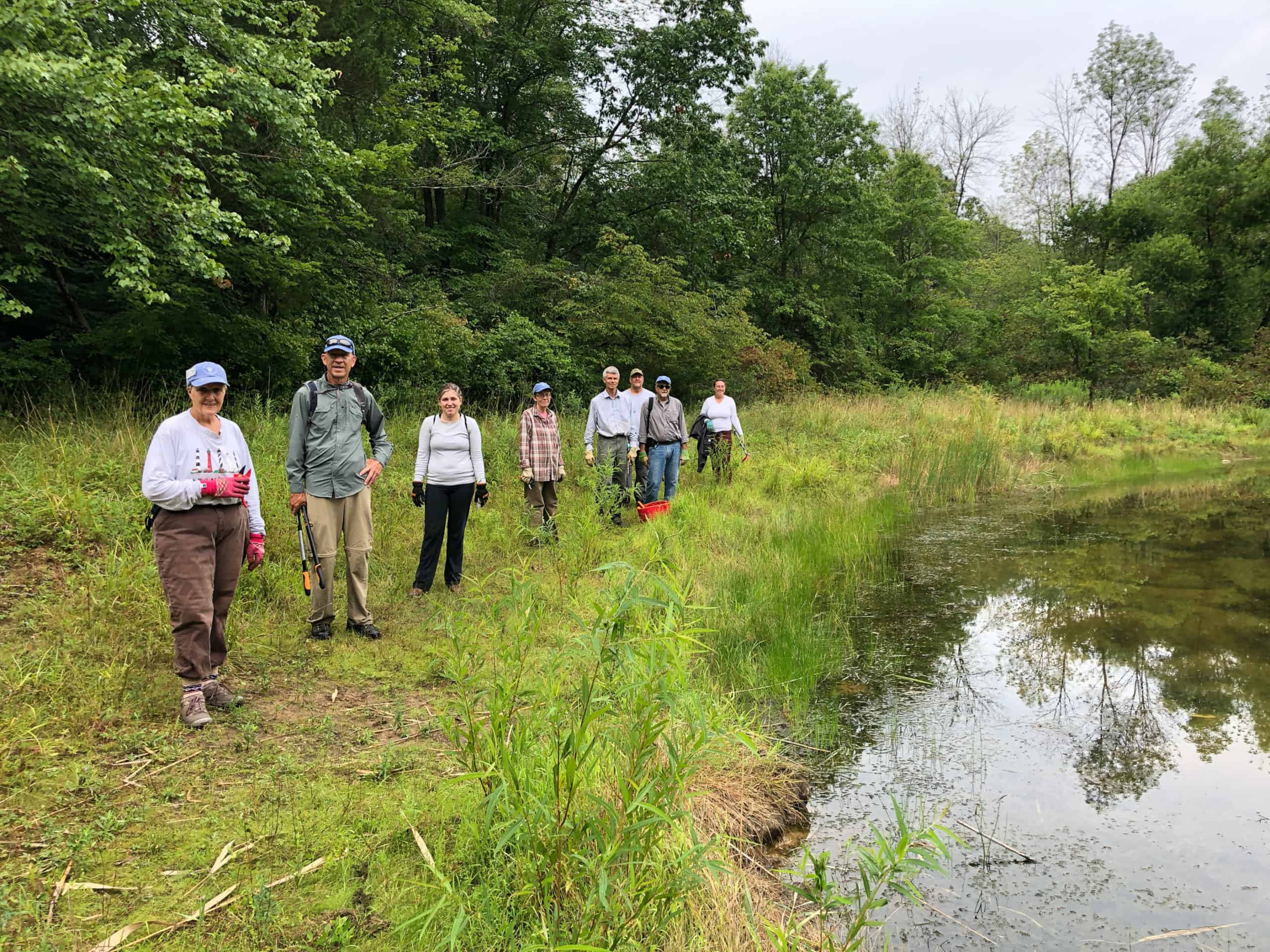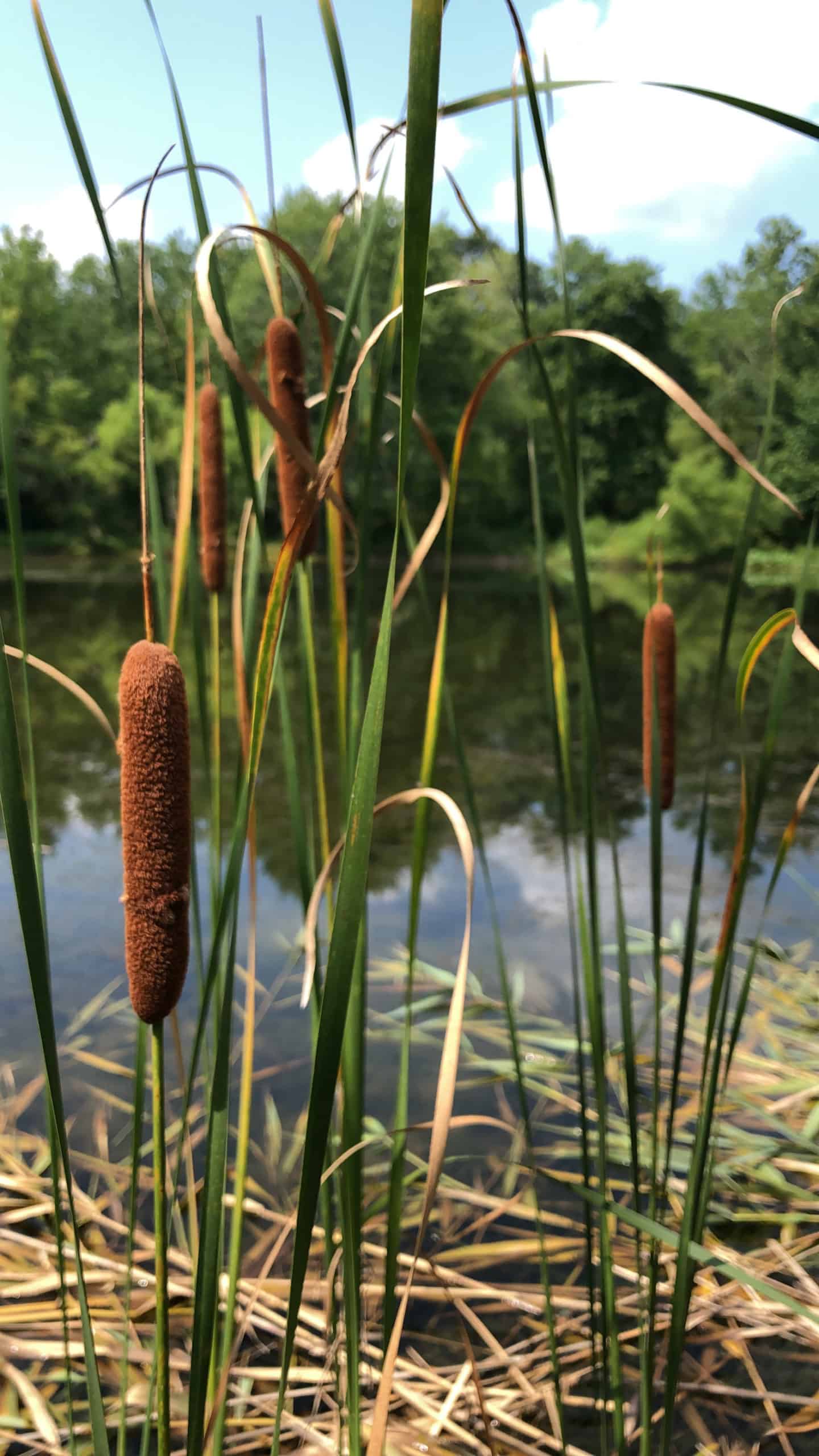Crow’s Nest: When to act and when not to…
By Daniel Barringer, Preserve Manager.

Link Davis, who leads botany walks throughout the region for the Perkiomen Watershed Association, recently led one at Crow’s Nest that ventured into our Warwick Woods and around the pond there. In addition to being informative and entertaining, Link’s descriptions of the plants we saw profoundly changed my perception of the land. Given my profession as land manager, I tend to focus on what needs to be done: what are our goals and what are the stressors and threats to achieving them? (Often, the latter are too many deer or the aggressions of invasive plants.) What Link demonstrated by articulating the broad diversity of plants we encountered was how much we’ve achieved there by doing nothing—that is, by not mowing around the pond the way it had been when it was part of the former campground.
Above, Link is comparing two plants with flowers that open and close under different conditions: scarlet pimpernel (Anagallis arvensis, upper hand), which opens when it is sunny, and lesser centaury (Centaurium pulchellum, lower hand), which has flowers that close in the afternoon. I assume this is an adaptation to select for specific pollinators but I’d have to do more research on that. While neither of these species is native, they aren’t invasive for us, and both were growing along the verge of Trythall Road.
Since Warwick Woods is a new addition to Crow’s Nest Preserve, I’ve focused on what obviously needs to be done there—and there is plenty. Around the pond alone there is invasive privet, multiflora rose, and phragmites, all of which can outcompete other plants and reduce the diversity that would otherwise occur there. But because of that focus, I failed to see how many species of desirable plants were also coming up on their own, not planted. While I had noticed some lovely blue vervain, Joe Pye weed, and several species of goldenrod, I had overlooked some of the smaller native plants. For example below, a zabulon skipper on the plant self-heal (Prunella vulgaris).

Or, how about ditch stonecrop (Penthorum sedoides) below? A very nice native that I had easily overlooked.

While I have come to appreciate how wonderful it is that these plants are coming up on their own, we’ve also stepped up our efforts to manage the species that would interfere with these plant communities. Now in our second year of work on it, we used volunteers to selectively remove phragmites from the shores of the pond and where it was growing up through the desirable red osier dogwood (Cornus sericea) and buttonbush (Cephalanthus occidentals). Below, the Force of Nature volunteers who accomplished so much this month.

Then there are open questions like that of narrow-leaf cattail (Typha angustifolia), below. This is the only place on the preserve where it grows, and there isn’t much of it (yet). (We have the so-called common cattail, Typha latifolia, elsewhere on the preserve.) By removing the phragmites around this plant at the pond we may have released it from competition. Though native to North America, it can be very aggressive and interfere with other stewardship objectives, so we’ll be watching this population carefully. It does provide valuable cover and in the short term will replace the phragmites in structure.

So sometimes expertise is not only knowing what to do to manage something, but when to do it and when not to do it.
